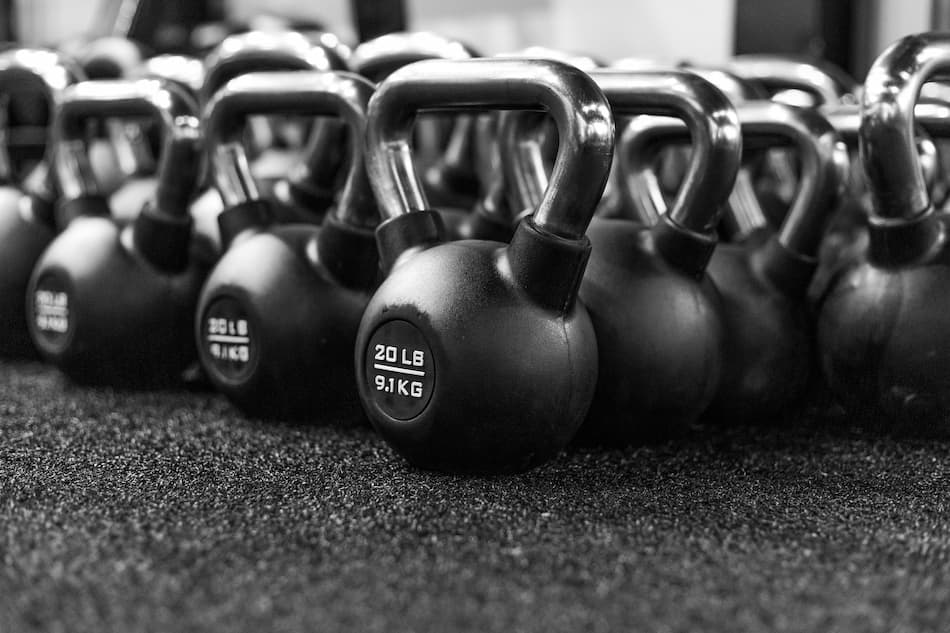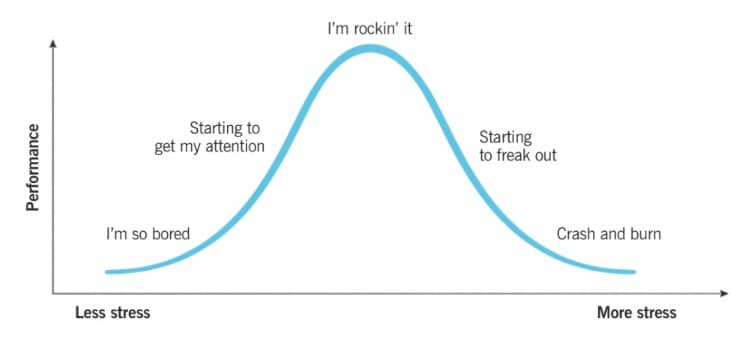After my latest article about doing kettlebell swings every day, one of my readers asks me an interesting question. He was curious if that approach can work for someone with less time, and someone who is just getting started on the kettlebell swing journey.
Today I will explain if doing 50 kettlebell swings per day is effective, and (most importantly) what are the pros and cons of this type of training.

In general, doing 50 kettlebell swings a day for a 12-minute per session (twice a week) can lead to an almost 20% increase in explosive strength and an almost 10% increase in maximum strength within the first 6 weeks, according to studies. However, the results will depend on individual fitness levels and the weight of the kettlebell.
Here is the general answer, but to know more details about what type of results you can expect from doing 50 swings per day, keep reading.
50 kettlebell swings a day results
So here’s the big question – Is it worth doing just 50 kettlebell swings? The answer is, it depends.
50 swings don’t sound like something hard to do. I can imagine that trained people can do 50 swings in one single set. What kind of results to expect from 1 set?
A randomized controlled trial done by Jason P. Lake and Mike A. Lauder from the University of Chichester shows that doing kettlebell swings only twice a week, for just a 12-minute time was enough to stimulate explosive strength by almost 20% and maximum strength by almost 10%.
The study was done with a group of trained female athletes, and it took 6-week. As you can see, doing 50 reps of some exercise is better than nothing.
That’s the power of kettlebell swings. So let me give you some practical examples of the program that you could start doing right away.
50 kettlebell swings a day workout plan
In this program, you just focus on doing kettlebell swings only.
It’s fast, simple, and effective. It can be done alone, or it can be done at the end of your regular workout.
It’s up to you.
| Number of sets | Number of repetitions |
|---|---|
| 1 | 5 reps |
| 2 | 10 reps |
| 3 | 15 reps |
| 4 | 20 reps |
- All you are looking for is just 4 sets.
- For each set, you simply progress with the repetitions.
- Expect at the last two (15 and 20) that you may feel quite out of breath (that’s what you want).
I would start for 6 weeks just to see if this is something for you. You gonna be successful with it only when you will stick to it. And to stick to it you must like it. So you can be willing to do it again and again.
50 Kettlebell swings and 50 pushups
Another great way to use swings is in conjunction with pushups. If you have only a few minutes per day, but you feel like you can handle more than just 50 reps of swings.
Here is starting to be interesting.
See below.
| Number of sets | Number of KB swings | Number of push-ups | Rest time |
|---|---|---|---|
| 1 | 5 reps | 5 reps | 2 min |
| 2 | 10 reps | 10 reps | 3 min |
| 3 | 15 reps | 15 reps | 4 min |
| 4 | 20 reps | 20 reps | – |
Of course, you could modify that from different angles.
For example.
- You could mix and match with reps, and stay with flat 10 reps for 5 sets each. This way you have one more set, and a little bit more time to rest.
- You could blast 50 swings as your first choice and then follow by doing 50 push-ups. This will have lower intensity but is the same volume in a week anyway.
- You could change the push-up exercise to something else, like a burpee.
50 kettlebell swings a day benefits
Some of the benefits of doing kettlebell swings include increased muscle mass, better explosiveness, aerobic fitness, and grip strength.
You can think of doing 50 kettlebell swings as a combination of strength and cardio exercise.
- On the one hand, it is a great resistance training exercise that can work as a deadlift alternative.
- On the other hand, it can be used as a cardio or conditioning tool either before, during, or after your main workout.
For beginners
Doing 50 kettlebell swings is a great exercise for beginners to build strength and muscle in their arms, as well as focus on the back and glute development.
- It’s a hip hinge movement, so it engages all the posterior chain muscles, as well as improves overall mobility.
- It requires a significant range of motion, which helps to maintain your flexibility.
When it comes to intensity, doing 50 swings per day for beginners is a sweet spot. It’s not ridiculously easy and it’s not extremely hard.
If you’re new to KB swings:
- I recommend starting off by doing small sets of 5-10 reps with at least 2-3 minutes of rest in between.
Increase the number of reps and sets only when you feel like you’re getting stronger (when you noticed that the weight or reps take less effort).
- Before you increase the intensity, focus on your form and technique and ensure you perform the exercise without any pain and discomfort.
For advanced
If you’re more advanced, you can use kettlebell swings workout as a conditioning tool to increase heart rate and metabolic rate.
For example.
- You can use them as a “finisher” at the end of your workout.
- You can combine 50 swings with other exercises like lunges, deadlifts, and overhead presses.
Plus, doing 50 kettlebell swings every day will significantly increase your cardiovascular capacity, grip strength, and your mobility. It can be used as a single-only exercise, as well as a part of the general training regime.
Disadvantages
Apart from the pros, doing 50 kettlebell swings a day has also a few disadvantages.
Low intensity
- Doing 50 swings per day may not be enough to induce effective training adaptations (for some people).
- If that’s the case, simply follow the progressive overload rule and start adding more reps, and sets, or use a heavier kettlebell.
Lack of variety
- Doing only kettlebell swings can be an effective tool to address weak spots, but in the long term, it may lead to muscle imbalance.
- If that’s the case, simply add more full-body exercises like squats, push-ups, rows, and lunges to cover all muscle groups.
My thoughts
Before I recommend a training plan, I always take into consideration fitness level first.
- If you are an experienced lifter, you can probably do 50 swings every day.
- If you just getting started, training every day may not be the best option.
Let me explain.
- Imagine you are going for a short, 20-minute walk every day.
- The terrain is fairly challenging, but you keep your pace moderate so that your heart rate can go slightly up.
- By the end of the walk, you should feel refreshed and energized. In physiology (that’s called eustress or beneficial stress).
A short, infrequent boost of “stress” on your body stimulates you just about right so you can feel good.
It’s good. It’s positive. And I would even say, it’s desired for the body.
On the other hand.
- If you walk for a whole day uphill, on uneven terrain, carrying a heavy backpack, for 7 days a week (how would that make you feel?).
Sore? Yup.
Tired? Yes.
Uncomfortable? Fed up? Maybe even grumpy?
At this moment even the smallest problem becomes a Big Problem.
In physiology and psychology, there is a term called allostatic load coined by Bruce McEwen in 1993.
It is about the accumulation of multiple physical and cognitive stressors that a person gets.
Here’s how it looks on the graph.

Looking from the left side, the less physical and cognitive stress we have, the more “bored” we feel. As we challenge ourselves, and more stress comes into our lives, our performance and motivation go up with it.
But once we have too much stress, once the allostatic load gets heavy, we start to crush. And here’s the thing. The faster you can recover from those daily stressors, the more stress you can handle.
Things that can affect allostatic load:
- Age
- Fitness level
- Personality
- Resilience
All these will determine how well we recover from that stress. So our ability to recover is what will dictate the allostatic load that we can take.
Some people need to train every day
That’s why training hard every day for some people may be exactly what they need. That’s when they feel at peak performance, they feel alive and motivated. I’m sure you know some of those people yourself.
They always seem addicted to daily exercise. And once they stop, they don’t feel good.
Some people don’t need to train every day
On the other hand, someone who has already a lot going on, and has a lower capacity to recover, may actually feel much worse from doing the same exact workout.
Hardcore everyday training may be simply too much, and easy to burn out. The effort is exceeding the peak state and they crush.
Conclusion
I think that doing 50 kettlebell swings is just enough to feel challenged, even if it’s done every day (for most people).
- It is therapeutic but not exhausting.
- It’s challenging but not impossible.
- It’s not a lot, but good enough if done every single day.
